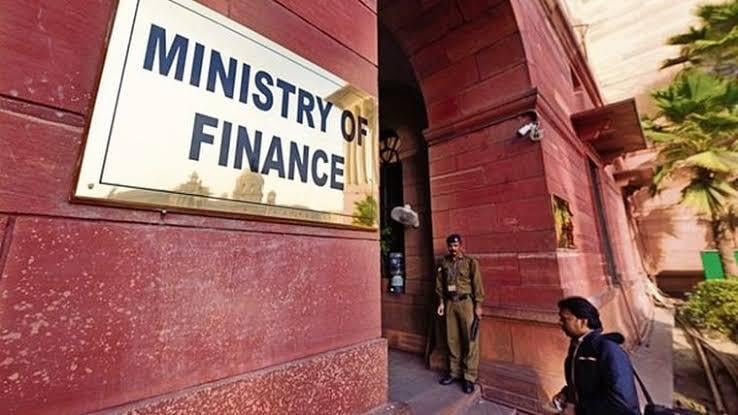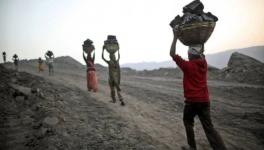Economic Survey: Focus on Wealth of Big Business Than Wealth and Health of Nation

This year’s Economic Survey begins with emphasising the importance of wealth of nations (inspired by Adam Smith) and depicts long-term contributions of the US, China, India and various other countries in world GDP (gross domestic product). The shares of China and India have gone up in the recent past, as these two economies have grown at a faster rate than the growth rate of World GDP.
From wealth of nation, the Survey comes down to wealth of top 100 entrepreneurs of India, and states that the salary of the employees working with the firms owned by those entrepreneurs is positively correlated with the increase in entrepreneurs’ wealth in last 10 years (2009-2019). The cross-section elasticity is reported to be approximately 0.7, meaning that if the increase in wealth (or net profit) for one entrepreneur has been 100% higher than the increase in wealth of some other entrepreneur, the total salary component of the employees working in the firms owned by the first entrepreneur would be less than 100% higher (68% higher) than the total salary bill of the firms owned by the second entrepreneur. The chief economic advisor of Ministry of Finance, Krishnamurthy. V. Subramanian, thinks that this is “India’s ‘tryst’ with socialism”.
Any student of economics would know that the size of the business and the number of employees are correlated because of the sheer scale of operation. Therefore, the total salary bill of bigger entrepreneurs would always be higher. Given any profit rate, the total profit or increase in wealth of the bigger entrepreneur would also be higher. But, the Economic Survey interprets this as “the wealth created by an entrepreneur correlates strongly with benefits that accrue to the employees working with the entrepreneur’s firms”.
This is not only misleading but simply wrong, in my view. The Chief Economic Advisor’s concept of ‘socialism’ is a matter of another embarrassment. The entire Economic Survey is full of non-serious interpretations of this kind and it is a futile attempt to cover up the failures of the present Indian government in addressing the real issues of unemployment, poverty and increasing inequality in the country.
On the basis of some statistically insignificant results and with significantly less than 1 elasticity, the Survey goes on to argue that the suppliers to these entrepreneurs, whose wealth increased more than the others within top 100 businesspersons in India, got benefitted and the capital expenditure has also been higher for them etc. Obviously, capital expenditures and expenditure of procuring commodities and services from the suppliers would be larger for the bigger entrepreneurs (businesses). Only the case of direct tax paid by these entrepreneurs has a statistically significant elasticity of 1 because the applicable profit tax rate is the same for all 100 top entrepreneurs.
None of these numbers are unexpected only if the interpretation would have been correct. In fact, this analysis makes it clear that the focus of the government is to increase the wealth of the top 100 entrepreneurs at a faster rate, which has been claimed to solve all the economic problems of lower wages, lower capital formation, lower benefits to the small and medium enterprises, lower foreign exchange earnings and lower direct tax collection.
Interestingly, the Survey mentions (in the second chapter of Part 1) that entrepreneurial activity in service and infrastructure sectors is positively correlated with unemployment rates across states i.e. as entrepreneurial activities increase, the unemployment rate also goes up. Although, this is negative (most probably statistically insignificant) for agriculture and manufacturing sectors. On the basis of all these, the Survey tries to emphasise the importance of entrepreneurial activities and, particularly of the top 100 businesspersons in the country. It also tries to provide evidence of ‘undermining the market’ and argues that government interventions, such as farmers’ debt waivers, ‘hurts more than it helps’. As a policy suggestion, it mentions that ‘legislative changes are required to be made to reduce government interventions’.
For job creation and growth, the Survey gives the direction of export-led growth trajectory by ‘specialising to export in network products’. It compares our export performance with that of China and argues that exports should be increased to solve the unemployment problem in the country. But, exports depend on demand from rest of the world, particularly from the developed world. The whole world is suffering from demand depression and facing a low-growth situation (including China and the developed countries) today. If demand is low for our exports from the rest of the world, how would exports grow beyond a point at aggregative level?
Exporters are trying their level best anyway. There is no problem with exporting more and strategising for that. However, expecting that the increase in export would compensate for domestic demand depression and would solve our problem of unemployment and slowdown, is unrealistic.
The Economic Survey also emphasises the need of ‘ease of doing business’ in India. It also says that flexibility in labour laws are important for investment. As if, we are suffering from unprecedented level of unemployment problem and that of slowdown because of lack of ‘ease of doing business’ and existence of stringent labour laws in the country. Probably, the Chief Economic Advisor is thinking of tackling macroeconomic problems by increasing the firm-level profit.
Vis-à-vis the banking and the financial sector, in the golden jubilee year of bank nationalisation in India, the Survey argues in favour of private sector banks and against nationalised public sector banks. “As PSBs account for 70 per cent of the market share in Indian banking, the onus of supporting the Indian economy and fostering its economic development falls on them. Yet, on every performance parameter, PSBs are inefficient compared to their peer groups.”(pp.176 of vol.1).
Now, these efficiency parameters are largely related to the profit of individual commercial banks and not related to priority sector lending, financial deepening and other welfare aspects of banks. It talks about non-performing assets (NPAs) but, does not mention the nexus between polity and big business and their pressure on PSBs, which is the main reason for generating NPAs or bad loans. It also talks about the fragility of non-banking financial companies, including mutual funds, and recommends some regulations. This Economic Survey has already been criticised for using non-authentic data sources, such as Wikipedia, instead of using government’s own databases.
The Survey champions the process of disinvestment and privatisation of various public sector units in a big way. Again, on the basis of firm-level analysis, it tries to establish that privatised firms are more efficient in earning profit than even the other private firms. If that is the case, why can’t the government make them more efficient instead of selling them to private players at throw-away prices? The Survey also tries to defend India’s GDP numbers because of a lot of ongoing controversies and argues that these are not overstated.
Thalinomics
The last chapter (11) of part I of the Economic Survey is the most interesting one – it is called ‘Thalinomics’. Through a survey conducted in 2015-16, it was found that the average cost of a vegetarian and non-vegetarian plate of food (thali) costs around Rs.22 in North and East India and little above Rs.25 in South and West India (for vegetarian) and Rs.30 in North and East India and around Rs.36 in West and South India (non-veg).
Since, there was lower food price inflation (not negative though) after 2015-16, the Survey claims that the costs of those plates of food have actually come down and there has been some increase again in 2019-20 following very high food price inflation. The government has not released the National Sample Survey Organisation’s consumption expenditure data of 2017-18 yet.
Whether the cost of those plates of food actually came down or not is not beyond question. The more crucial question is that of affordability. According to the periodic labour force survey of 2017-18, the average monthly income of Indian workers was Rs.9,874. According to the calculations of the Survey, in a family of five, the daily cost of a vegetarian plate would be around Rs.235 and that of non-veg plate would be around Rs.330 (assuming two meals pear head per day). Even if we roughly assume the average cost to be Rs.250 per plate, the monthly expenditure would become Rs. 7,500. Therefore, just for two meals a day, families with single earning member have to spend more than 75% of their earnings on food alone.
But, here the Survey assumes Annual Survey of Industry’s (ASI) data for average wage rate. ASI gives the data for organised manufacturing and some services based mainly in urban areas. Rural wages are much lower and wages in unorganised informal sector, where more than 90% of our workforce is engaged, would also be lower than the organised manufacturing and service sector. However, the Survey claims that with 50% of ASI-based average wage rate, in 2019-20, two meals a day would be affordable. It is better than before, as food price inflation has been lower than the growth rate in nominal wages (ASI).
The most important point to note here is that 50% of the households do not even earn 50% of ASI-based wage in India. The Survey dehumanises the labour by stating “food is not just an end in itself but also an essential ingredient in the growth of human capital and therefore important for national wealth creation (read increase in wealth of the big capitalists).” But, it is clueless about how to improve wage rates and how to reach near full-employment situation. It stresses upon skill formation and vocational training etc. but, that would not be able to tackle the problem of large-scale involuntary unemployment under a demand constrained situation.
Part I of the Survey is the most important vision document of the government vis-à-vis the direction of macroeconomic policy to be pursued in the country. It does not talk about inequality at all, which is the root cause of demand depression, slowdown and rise in unemployment.
In the last chapter of part II of the Survey on social infrastructure, employment and human development, it is mentioned that the total employment has come down in 2017-18 as compared to 2011-12 in absolute numbers. There must have been some addition to the labour-force in five years period. Therefore, the unemployment rate must have gone up in the country.
The Survey mention ‘education for all’ and ‘health for all’, ‘housing for all’ but, there is hardly any increase in the allocation to fill up huge social sector gaps that we have here in India. There is absolutely no mention of enhancing wage and coverage and effectiveness of MGNREGS (the rural job guarantee scheme) in the entire document.
The main problem can be identified from the table 1 of chapter 2 of the second volume on fiscal developments. The total expenditure of the Central government has come down from 13.3% of GDP in 2014-15 to 12.2% in 2018-19. This has happened mainly because of reduction in fiscal deficit from 4.1% of GDP to 3.4% of GDP and because of reduction in revenue receipts from 8.8% of GDP in 2014-15 to 8.2% of GDP in 2018-19.
On the whole, one gets an impression from this year’s Economic Survey that the broad policy direction of the government would remain the same -- of neglecting the social sector and serving the interests of the big businesses. The underlying assumption is one of the unrealistic ‘trickle down hypothesis’ that if big businesses can accumulate their wealth at a faster rate, all other things would automatically fall in place and income distribution would automatically be ensured. The ‘invisible hands’ would take care of the rest and government should minimise its intervention for ensuring greater reliance on the market and wealth accumulation (of big entrepreneurs) at a faster rate.
This is an oxymoron in the sense that the government itself defies the logic of its own active presence in the economy to solve the burning economic and social problems. However, this is the main essence of neo-liberalism. And the Economic Survey seems to stand strongly by it.
The writer is assistant professor, Centre for Economic Studies and Planning, Jawaharlal Nehru University, Delhi. The views are personal.
Get the latest reports & analysis with people's perspective on Protests, movements & deep analytical videos, discussions of the current affairs in your Telegram app. Subscribe to NewsClick's Telegram channel & get Real-Time updates on stories, as they get published on our website.
























